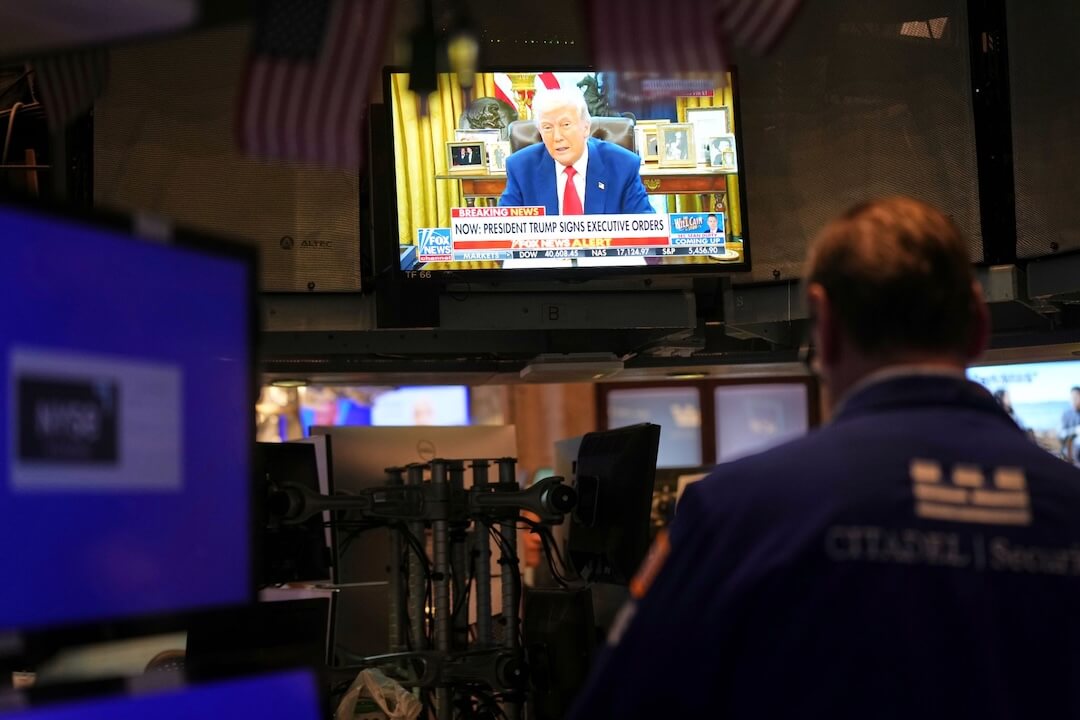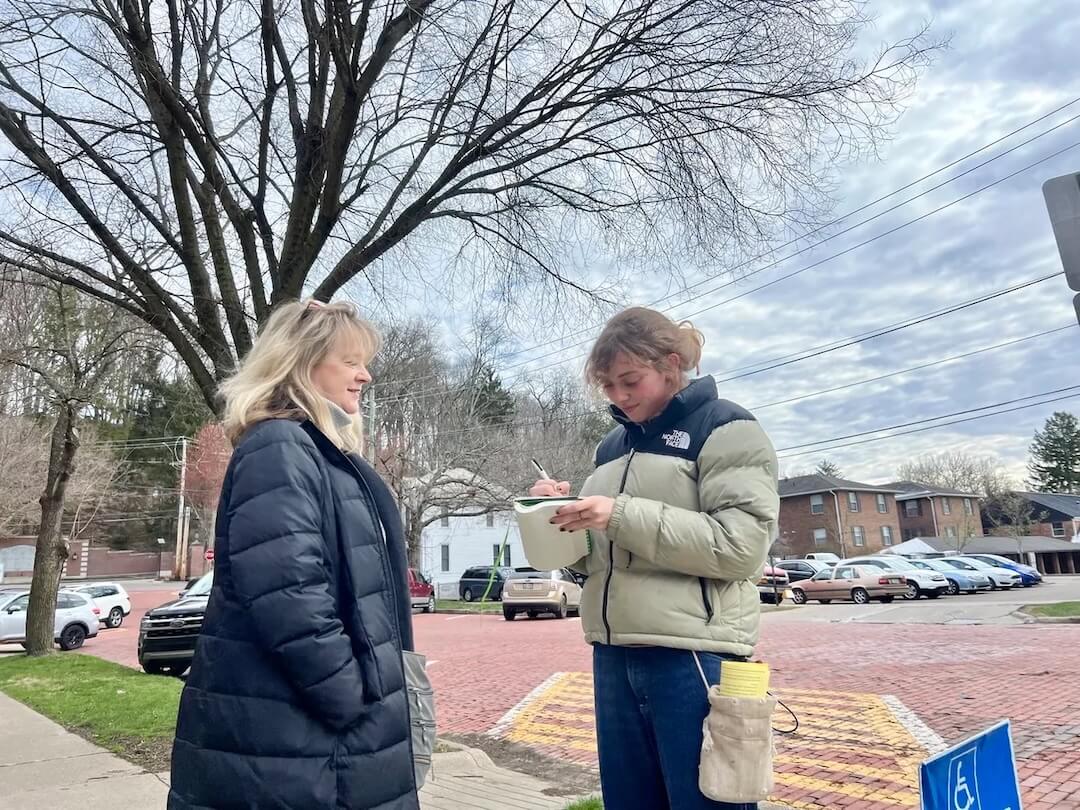 Covering COVID-19 is a daily Poynter briefing of story ideas about the coronavirus and other timely topics for journalists, written by senior faculty Al Tompkins. Sign up here to have it delivered to your inbox every weekday morning.
Covering COVID-19 is a daily Poynter briefing of story ideas about the coronavirus and other timely topics for journalists, written by senior faculty Al Tompkins. Sign up here to have it delivered to your inbox every weekday morning.
President Donald Trump, who is supposed to be “quarantined” after being diagnosed with COVID-19, instead got into a Secret Service SUV and cruised by cheering fans outside Walter Reed Medical Center on Sunday evening.
Keep in mind, he has a highly contagious disease and was riding in a closed vehicle. The Centers for Disease Control and Prevention warns against sharing a vehicle with a COVID-positive person because it is impossible to get more than six feet apart. If riding in a car is unavoidable, experts recommend opening windows, which is not possible given Secret Service protocols.
The presidential SUV is reported to have its own “environmental system,” including a highly engineered air filtering system.
The president says he has “gone to school” about COVID-19 and that he would have a lot to say about that. The CDC says this about how a quarantine is supposed to work:
You can be around others after:
- 10 days since symptoms first appeared and
- 24 hours with no fever without the use of fever-reducing medications and
- Other symptoms of COVID-19 are improving
In fact, by the CDC’s protocols, the Secret Service agents who were in that vehicle with him should now quarantine for two weeks. Dr. James P. Phillips, the chief of disaster medicine at George Washington University Emergency Medicine and an attending physician for Walter Reed Medical Center, said of the president’s drive-by:
Every single person in the vehicle during that completely unnecessary Presidential “drive-by” just now has to be quarantined for 14 days. They might get sick. They may die. For political theater. Commanded by Trump to put their lives at risk for theater. This is insanity.
— Dr. James P. Phillips, MD (@DrPhillipsMD) October 4, 2020
That Presidential SUV is not only bulletproof, but hermetically sealed against chemical attack. The risk of COVID19 transmission inside is as high as it gets outside of medical procedures. The irresponsibility is astounding. My thoughts are with the Secret Service forced to play.
— Dr. James P. Phillips, MD (@DrPhillipsMD) October 4, 2020
This is no time to be cavalier about this disease.
Oklahoma is now experiencing a record number of COVID-19 cases and intensive care wards are nearing capacity. Upper Michigan is recording a new increase in cases and the governor told people there to work remotely if they can, to only gather in smaller groups and to wear masks. New Jersey just recorded the biggest single-day increase in four months.
New York City Mayor Bill de Blasio announced Sunday that he wants to “rewind” the reopening of nine neighborhoods in Brooklyn and Queens. The “rewind” means nonessential businesses, public and private schools and day care centers in those neighborhoods will close. The city’s schools had only been fully reopened for three days.
By way of context, it affects 20 of the city’s 146 neighborhoods. The city will need state approval to impose the closings. “Local governments have not done an effective job of enforcement in these hot spot ZIP codes. The state will be doing aggressive enforcement starting tomorrow,” Gov. Andrew Cuomo said.
Notice how many states in the latest Johns Hopkins tracking map are turning red once again.
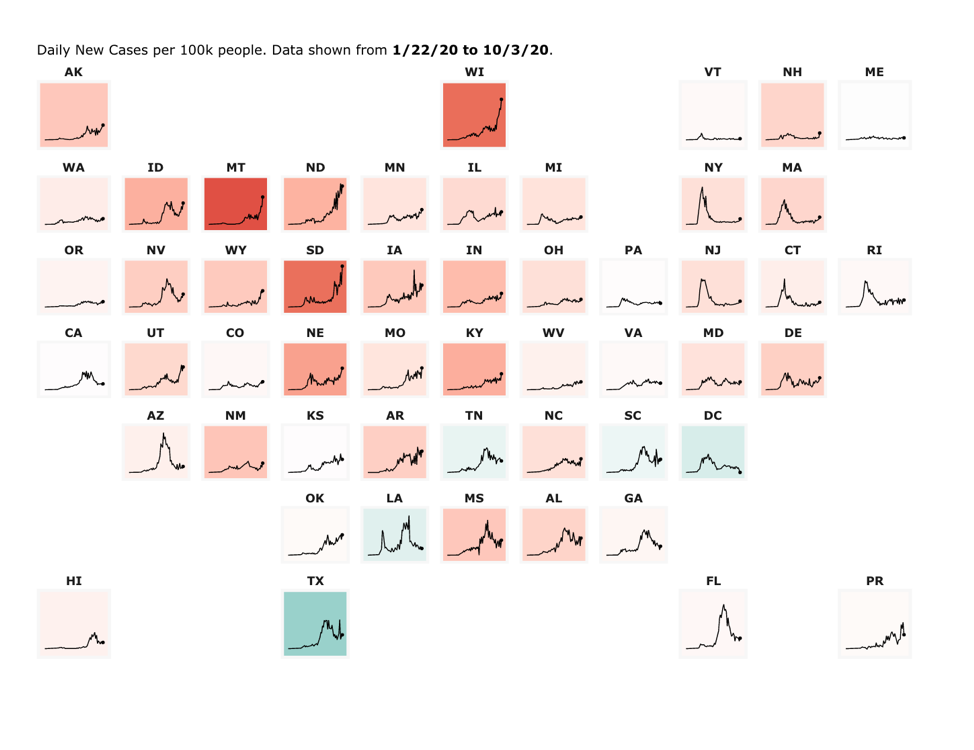
(Johns Hopkins)
Contact tracing takes center stage
President Trump’s COVID-19 infection set off at least a six-state contact tracing scramble and refocused public attention on how health investigators do their work.
Contact tracers are looking around Minnesota, Ohio, New Jersey and Pennsylvania, which the president visited in the time period where he and those who surround him were infected. Add to that all of the places where dignitaries returned home after they attended the Rose Garden ceremony to name a Supreme Court nominee. The virus from that ceremony may have been spreading for six days before the public knew it.
Contact tracing is laborious and inexact. But you might help by reporting more about how it works and also explaining how contact tracing apps work. I suspect you already have done these stories, but as an old boss of mine used to say, “About the time you get tired of explaining these things, the public will finally hear about it.” These mobile apps are of little value if only a tiny percentage of people use them.
Google and Apple both have contract tracing apps but they are not widely used. USA Today found 14 states where the apps work currently:
New Jersey, New York, Arizona, North Carolina, Florida, Delaware, Virginia, Nevada, South and North Dakota, Wyoming, Alabama. Rhode Island and Pennsylvania. The New York and New Jersey apps just launched.
Some states are testing the software now, before deciding whether to go forward. Arizona and California, for instance, are testing it now. “The purpose of the pilot is for the state, along with local health entities and academic partners, to study the efficacy of the app,” said Dr. Erica Pan, California’s Interim State Public Health Officer.
Colorado, Connecticut, Maryland, Oregon, Washington and Washington, D.C., have announced plans to launch their apps, according to Google.
Canada has a tracker app, too.
If your state is one of almost half of the states in the country that have not launched a tracing app, you might ask why.
Google says the Bluetooth signal from your phone sends signals to others who also sign up. If you test positive, you enter information into your phone’s app and that sends a message to others who were near you. The signal includes a message to others on what to do next. Google claims there is no way to identify you as the sender and that “The Exposure Notifications System does not collect or use the location from your device. It uses Bluetooth, which can be used to detect if two devices are near each other — without revealing where the devices are.”
This is the way Apple and Google explain the system:
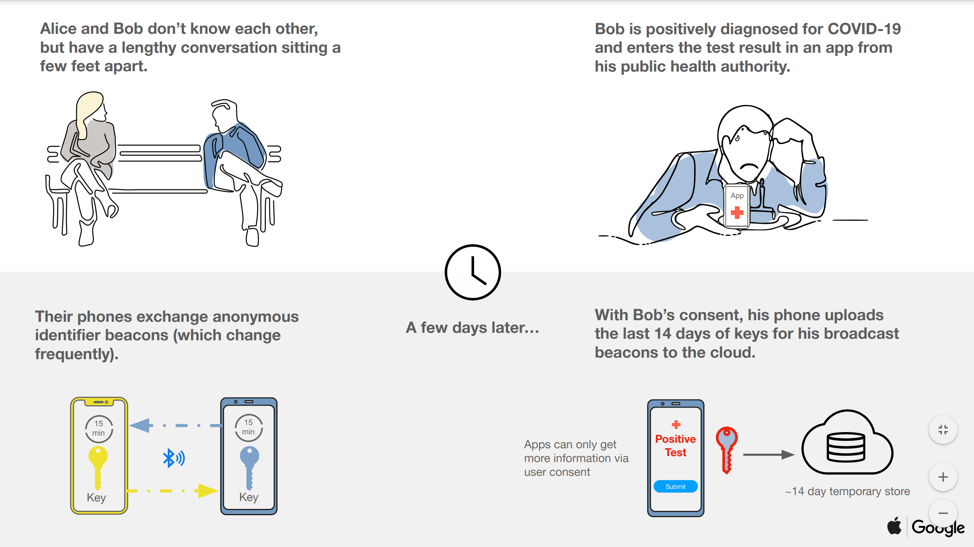
(Apple/Google)
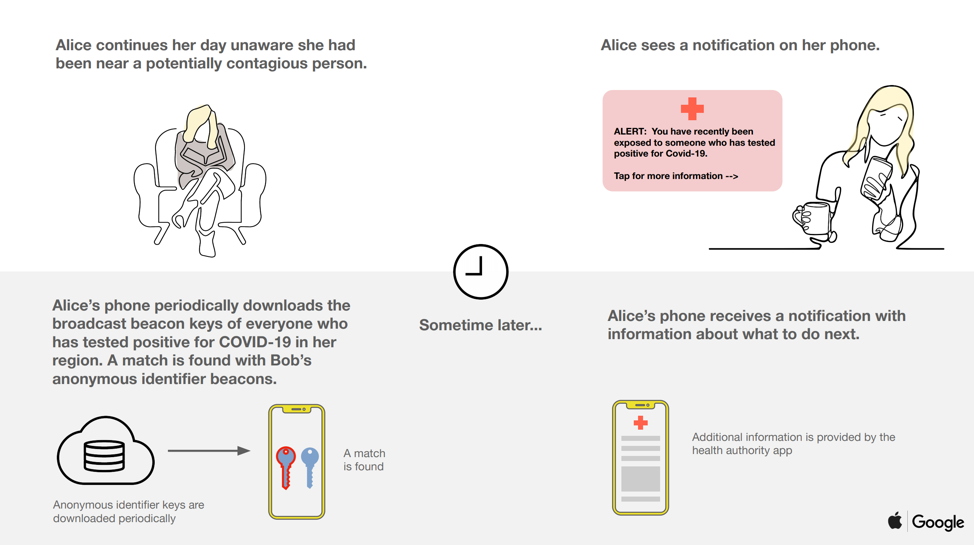
(Apple/Google)
Then again, I don’t know how the health providers will convince people to download a COVID-19 tracker app for their phones when we can’t get them to wear masks. There are lots of rumors about how these apps track you, store your travel info and so on. They are rumors.
[the_ad id=”667826″]
The president is taking remdesivir. What’s that?
The president’s doctor says among the treatments they are using is a drug called remdesivir. The Food and Drug Administration has not given approval for it to be widely used but has designed it for “emergency” use, meaning it may be used for patients who are in the hospital with COVID-19.
In easy-to-understand terms, the drug is thought to interfere with the virus’ ability to replicate itself. When SARS-CoV-2 enters a cell, it releases a strand of RNA containing its genome and tries to replicate itself. To do that, the RNA attaches to a ribosome. NPR picks up the explanation:
As anyone who has used a Xerox machine knows, when you make copies of a copy, the new copies can get harder to read. A similar phenomenon takes place within the cell, and so normally, new copies of a virus can contain mutations.
One reason coronaviruses are so good at proliferating throughout the body is because they carry a special “proofreading” protein that catches the errors, helping the virus replicate itself correctly. Each compromised cell can create thousands of copies of the virus, which then infect nearby cells, where replication begins again.
That’s where remdesivir comes in. It helps control the coronavirus by disrupting its proofreading process. To the coronavirus, Remdesivir looks like a natural part of the human cell. But when remdesivir gets stitched into the new replicated virus, it gums up the works.
“Now the virus is making a lot of rotten genomes that poison the viral replication process,” geneticist Judith Frydman explained this summer to Stanford Medicine.
In short, the drug slows down the virus’ ability to keep replicating itself — it does not eliminate it. It gives the human body a better chance of recovering faster. A study published by the New England Journal of Medicine said patients using remdesivir recovered in 11 days as opposed to the more typical 15 days. The study involved 1,059 patients.
One reason physicians on cable news shows perked up when they heard remdesivir was prescribed is that the typical use of that drug is accompanied by supplemental oxygen therapy, according to the New England Journal of Medicine article. (See the final paragraph of the study.)
Why are blood oxygen levels important?
This weekend we were fixated on whether President Trump needed supplemental oxygen and Sunday learned his oxygen level had dipped below 94%. We don’t know how much below 94% it dipped but experts consider anything below that level to be a severe COVID-19 case.
The National Institutes of Health guidelines say (forgive me for quoting medical jargon but some of you will want this):
Severe Illness: Individuals who have respiratory frequency >30 breaths per minute, SpO2 <94% on room air at sea level, ratio of arterial partial pressure of oxygen to fraction of inspired oxygen (PaO2/FiO2) <300 mmHg, or lung infiltrates >50%
Patients in that range generally get oxygen by nasal tubes, plus X-rays, electrocardiograms and renal and liver function tests.
When a patient’s blood oxygen drops below 85%, more severe measures are called for, including oxygen masks and in the worst case, intubation.
Why are blood oxygen levels important?
The Mayo Clinic explains, “Blood oxygen levels can tell you how well your body can absorb and use the oxygen you breathe in, which is transported to your red blood cells through your lungs. In order to be considered healthy, you need at least a 90% blood oxygen saturation level reading from a pulse oximeter.” Low oxygen levels can precede serious health problems.
The word for low blood oxygen is “hypoxemia.” It can cause problems with some organs and tissue.
You may know that the new Apple Watch includes a pulse oximeter. Apple is not making any health claims, but Apple says the feature is partly behind the popularity of the new device. “In Apple Watch Series 6, the optical heart sensor has been redesigned to add blood oxygen measurement capabilities,” Apple says. “During a blood oxygen measurement, the back crystal shines red and green LEDs and infrared light onto your wrist. Photodiodes then measure the amount of light reflected back.”
[the_ad id=”667872″]
Movie theatres are closing again
We should hear soon if Regal goes through with its notion of once again closing theatres in the U.S. and U.K. as the company says the option is “being strongly considered.”
The theatres are getting whacked by movie studios pushing back release dates of important films and by moviegoers who are reluctant to come to theatres. The final straw pushing theatres into considering closing is the just-announced delay of the new James Bond film, “No Time to Die,” that now won’t come out until April. Variety reports:
The delay is a major blow to theaters, and there’s a chance more could be forced to close given the lack of new content on the horizon. Pixar’s “Soul” on Nov. 20 is now the next big movie slated for theatrical release. However, there are rumblings that Disney will move the animated adventure and possibly even put it on Disney Plus, the studio’s subscription streaming service. Two Warner Bros. titles, “Wonder Woman 1984” and “Dune,” are still set for December, though there’s a chance those could be postponed again as well.
How we live now: photos of students in 13 countries during a pandemic
The classrooms are taped off. The students sit in plexiglass boxes. They are masked and shielded, scanned and separated. You will linger on every image in this collection from Morning Brew. Don’t miss the image from Thailand and the one from Syria.
The efforts that these schools and children are making to attend school while staying safe makes me increasingly less tolerant of adults who can’t be bothered.
The times in which we live, part two
Debates won’t look the same after this weekend. This happened Saturday night.
Jaime Harrison brought his own plexiglas divider to his Senate debate with Lindsay Graham. #SCSen pic.twitter.com/MX15BaY5S2
— Amy S. Rosenberg (@amysrosenberg) October 4, 2020
We’ll be back tomorrow with a new edition of Covering COVID-19. Sign up here to get it delivered right to your inbox.
[the_ad id=”667878″]
Al Tompkins is senior faculty at Poynter. He can be reached at atompkins@poynter.org or on Twitter, @atompkins.





